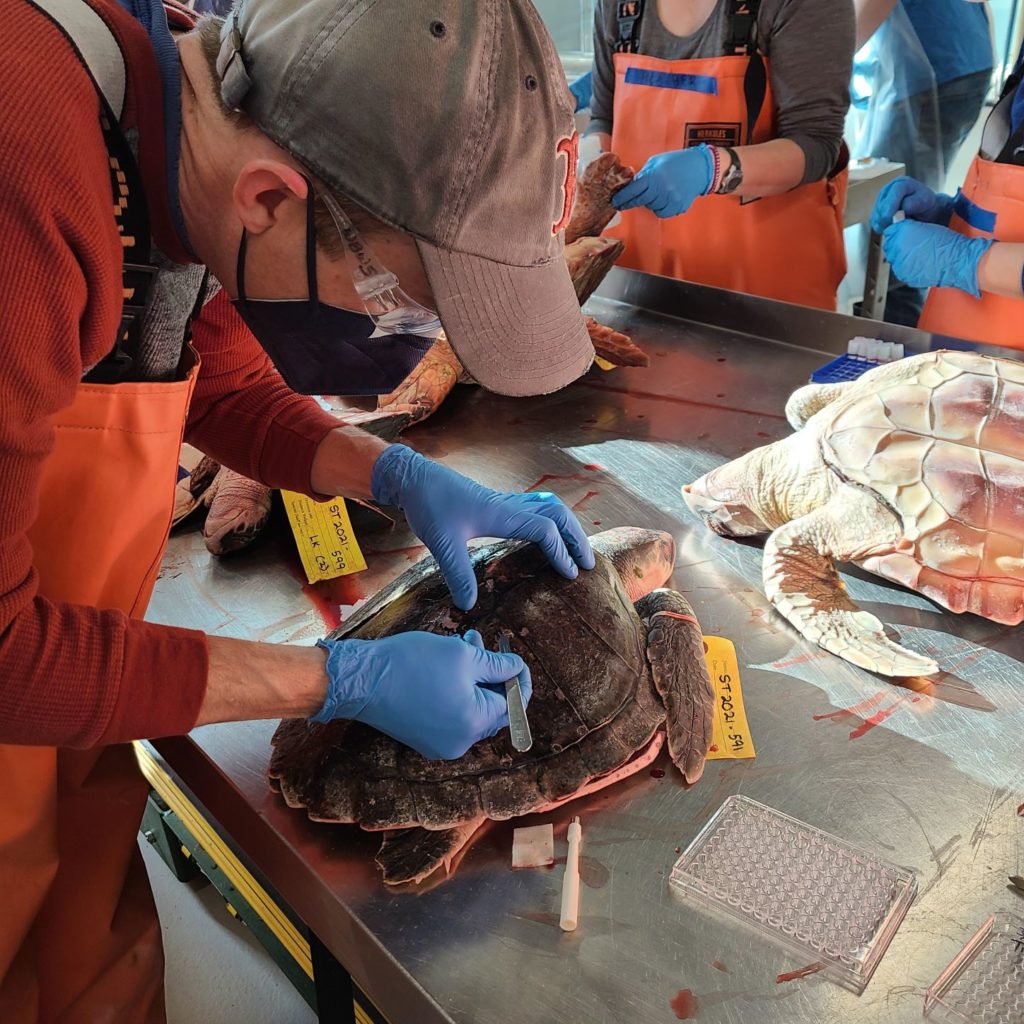While it may not seem as gratifying as rescuing a live, cold-stunned sea turtle from a beach, Wellfleet Bay’s sea turtle program serves another important function: as a valuable resource to area scientists working to learn more about sea turtles, their life cycles, and how to better protect them.
Typically, after each rescue season, sanctuary staff, volunteers, and researchers from government and other scientific organizations gather at a state-of-the-art lab at the Woods Hole Oceanographic Institution to necropsy sea turtles that did not survive the cold-stun period. Many of the scientists collect samples from these turtle carcasses for their respective studies.
A Shortened Schedule for Samples
In part because of COVID restrictions last year, we were unable to hold our full schedule of necropsy sessions. But this spring we were determined to necropsy at least enough turtles to provide the necessary samples to keep these important research projects going. In two sessions, Wellfleet Bay sea turtle staff, a handful of volunteers, and invited outside research colleagues gathered at WHOI to necropsy a small portion of the 2021 cold-stun carcasses.

Researchers and Their Studies
Outside research samplers participating this year were from NOAA’s Northeast Fisheries Science Center, the Coonamessett Farm Foundation in Falmouth, the Massachusetts Division of Marine Fisheries, Roger Williams University, and the University of Rhode Island.
One of the researchers, Dr. Matthew Ramirez, a post-doctoral investigator at URI, joined us to take samples for comparing stable isotope data across different sea turtle tissue types (e.g., humerus bone, skull, scute, muscle, skin), which provide information about diet and habitat use over different lengths of time (weeks to years). Dr. Ramirez’s inter-tissue isotope comparisons will increase capabilities of integrating stable isotope data collected from modern studies and historical museum specimens to better understand long-term changes in sea turtle ecology.
Another study, started by Dr. Samir Patel from the Coonamessett Farm Foundation two years ago, involves looking at the bacterial microbiome composition within the digestive systems in cold-stunned sea turtles. This information will be used to improve understanding about turtles’ foraging preferences. Results from the cold-stunned turtles will be compared to gut contents from live caught turtles from the Mid-Atlantic to understand demographic and regional differences between turtle microbiomes.
Looking Ahead
While we were pleased to give our colleagues an opportunity to collect new samples for their work, we missed many of our regular necropsy volunteers at this year’s limited sessions. We hope to be able to return to our traditional necropsy sessions before long. We will keep you posted!

